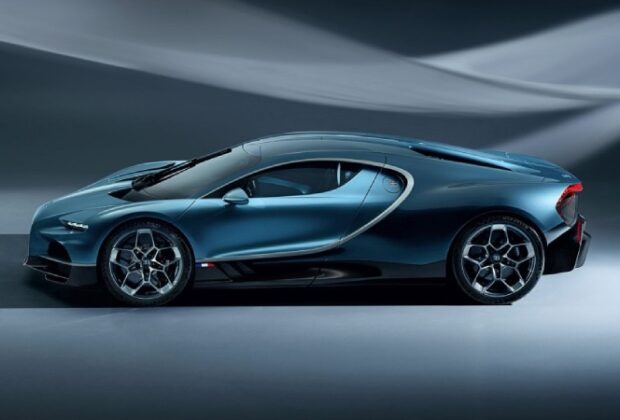The next hypercar from Bugatti, the Tourbillon, has been unveiled. It replaces the Chiron and sets new benchmarks for the hypercar industry with its innovative powertrain and modern styling. The W16 engine that drove the Chiron and the Veyron before it was replaced by the hybrid V16 engine found in the Bugatti Tourbillon, is the first model in the brand’s lineup. Only 250 Tourbillon models will be made by Bugatti, with prices starting at €3,800,000 (about Rs. 34 crores). The term ‘Tourbillon’ alludes to a mechanism found in luxury timepieces that contributes to timekeeping precision, underscoring Bugatti’s commitment to fine craftsmanship.
Bugatti Tourbillon – Engine
The 8.3-liter naturally aspirated V16 engine in the new Bugatti Tourbillon generates 1000 horsepower and 900 Nm of torque. The entire power output, when combined with the three electric motors, is an astounding 1800 horsepower and 2300 Nm. A dual-clutch automatic transmission with eight speeds powers this potent combination. In just two seconds, according to Bugatti, the Tourbillon can accelerate from 0 to 100 km/h and from 0 to 299 km/h in ten seconds. Although Mate Rimac, the CEO of Bugatti, intimated that the highest speed might be considerably higher, the official word is 445 km/h.
Bugatti Tourbillon – Design
In terms of design, the Bugatti Tourbillon is completely original, with no components taken from the Chiron. Large horseshoe-shaped grille and quad LED headlamps are located on the front. The ‘Bugatti Line’ has a new interpretation on the sides, while the car’s iconic spine continues along its centre. The car’s rear end features a large diffuser with quad exhaust tips at the bottom and full-width LED tail lights with ‘Bugatti’ writing in the centre.
Bugatti Tourbillon – Interior
The Tourbillon’s interior features a redesigned dashboard and cabin with a large number of analogue dials and controls. The mechanical movement seen in luxury timepieces served as the model for the gauge cluster. Although there is a small display with Apple CarPlay compatibility, it is hidden in the dashboard and only shows up when the driver asks for it to. The steering wheel is one of a kind; only the wheel itself turns, while the hub and instruments remain fixed.








